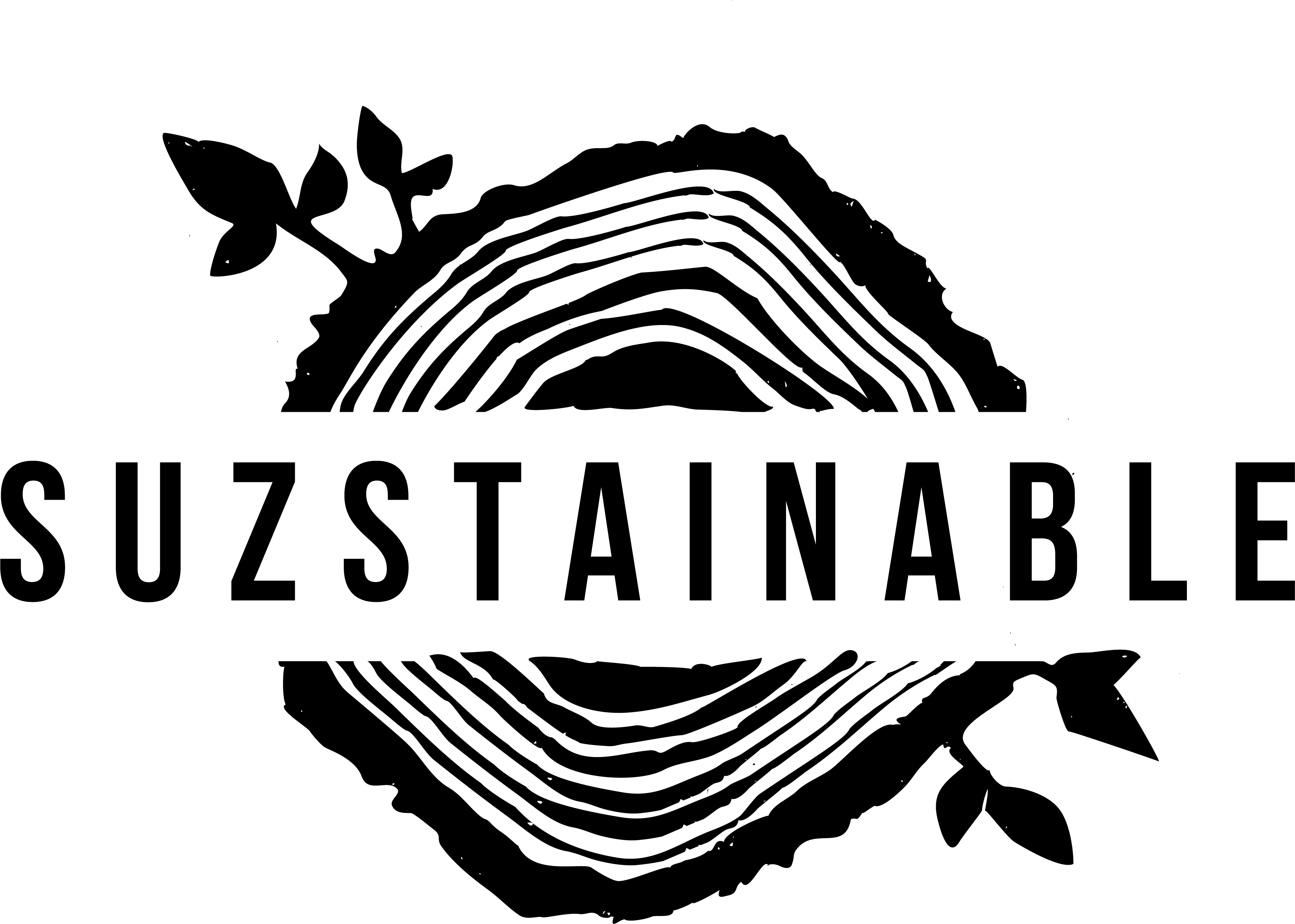Vogue Italia’s Gulf of Mexico oil-spill photoshoot, featuring photographs by Steven Meisel and the more recent oil spill on July 25, 2020, caused by a Japanese cargo ship, the Wakashio, which struck a reef off the coast of Mauritius and leaked more than 1,000 metric tons of oil into the pristine waters and unique ecosystems around the island, were the inspiration for this capsule collection.
Meisel’s photographs for Vogue Italia portrayed models in oil slicked luxury gowns washed up on the beach or amidst the rocks, that represented the oil coated birds, sea turtles and mammals that were injured and killed by the toxic effects of the oil spill, which was the largest marine oil spill in history, caused by an explosion on the Deepwater Horizon oil rig located in the Gulf of Mexico on April 20, 2010.

Meisel’s images are both shocking and beautiful and were the cause of much controversy at the glamorisation of the disaster. For the launch of my SUZSTAINABLE website, I have produced a collection of slow fashion staples with a paradoxical print.
The collection consists of camisole tops, tees, slouchy dresses and kimono tops, all available in a choice of prints (Blue Paradox and Pink Paradox).
I wanted to create images that are delicate and beautiful but brought awareness of pollution and the environmental damage caused by the fashion industry.
The collection features oil pollution inspired digital prints on 100% organic silk, sourced from Ba Loc-Lam Dong and woven by hand in Ha Nam in Vietnam. The collection is also hand-made by local tailors in Hanoi, Vietnam.

FASHION AND THE ENVIRONMENT
“Fashion and environmental awareness are two concerns that do not sit comfortably side by side”[1], as the fashion industry, as it exists today, is largely disconnected from the effects of its products on nature and culture. Every garment made has an environmental footprint at every stage in its production and there is little recognition of the waste mountains, pollution and climate change caused by the fashion and textiles industries. A vast array of chemicals are used to cultivate, process, dye and finish fibres in the process of making them into fabrics – many of these chemicals can be toxic to the environment and to human health and contribute to global environmental damage. Even the disposal of our clothing causes environmental damage, as waste sent to landfill produces methane, a powerful greenhouse gas.
[1] Black, S, Eco-chic: The Fashion Paradox, Black Dog Publishing, 2008
The materials used for wood-based fabrics like rayon, modal and viscose contribute to deforestation, however most clothes today are synthetic, made from polyester or acrylic, both forms of plastic. Plastic based fabrics are a by-product of the oil and gas industry, and it is estimated that it takes about 70 million barrels of oil to produce the polyester used in fabrics for clothing each year. Aside from the environmental impact incurred during extraction, manufacturing and shipping of synthetic clothing and textiles, the use of fossil fuels brings with it other detrimental issues including oil spills, methane emissions, wildlife disruption and a loss of biodiversity.
Textile production produces 1.2 billion tonnes of greenhouse gas every year according to the Ellen Macarthur Foundation; the United Nations estimates that 10 percent of total global emissions are caused by the fashion industry.
FAST FASHION
Within the last 20 years there has been an increased demand for high speed, high volume and cheap clothing, known today as fast fashion. Cheap fashion means disposable fashion, and fast fashion encourages quicker and greater consumption, creating a vicious circle that is unsustainable.
The rapid globalisation of the fashion industry has allowed companies to shift the bulk of their production to the developing world where the sourcing of materials, and the manufacturing of fast fashion puts pressure on the clothing manufacturers and their suppliers. Afraid of losing an order, the clothing manufacturers minimise the cost of production in order to maximise profit, impacting those at the bottom end of the production chain who actually make the clothes. The workers are forced to work long hours to complete orders on time, and as overtime is usually compulsory workers are penalised if they refuse. A lack of transparency in the fashion supply chain in many different countries, especially those in Asia, means that many brands can, and do, get away with unethical business practices such as poor or unsafe working conditions, exploitation and abuse of workers, child and forced labour, poverty wages and a lack of human rights.
French philosopher, writer and sociologist Gilles Lipovetsky describes in his thesis “Hypermodern Times”[1] the paradoxical nature of our fashion-centred lives, which involves a seemingly incompatible social phenomena: an increase in large-scale poverty simultaneous with a phenomenal abundance of goods and services. But the fashion industry holds many dirty secrets and contradictions – it is both transient and cyclic, taking elements from the past and mixing them with the new; it is a form of free speech – a language and represents an expression of personal identity, while also demonstrating group affiliation; a sense of belonging.
[1] Lipovetsky, G, Hypermodern Times. Polity; 1st Edition, 2005

SLOW FASHION
In contrast to fast fashion, slow fashion is an awareness and approach to fashion in which designers, buyers, retailers and consumers are more aware of the impacts of the processes and resources required to make clothing. Slow fashion values fair treatment of people, communities, animals and ecosystems, particularly focusing on sustainability. It involves buying better-quality garments that will last for longer.

